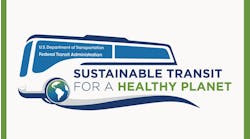While no one has decided to ax any specific project, the lost money is more than enough to . . .
... fund a new MARTA heavy rail extension from the Doraville station to Norcross . . .
. . . rebuild a half-dozen I-285 interchanges, such as the one proposed at Greenbriar Parkway . . .
. . . widen several arterials, such as a stretch of Ga. 120/Roswell Road or a stretch of Buford Highway.
The region will have $235 million less to spend on transportation projects from a 10-year sales tax than economists predicted a year ago under draft projections.
That means the elected officials whittling down the region's proposed project list this summer will have even more cutting to do: With $22.9 billion in desired projects to choose from, they will have only $6.14 billion to spend on projects of regional significance.
Next year, the list will go before voters, who will decide whether to fund them by imposing a 1 percent sales tax.
The tax could represent the largest single investment in transportation projects in the region's history.
If approved, the projects could change the region on a large scale, linking formerly isolated suburbs in Gwinnett and Cobb counties to MARTA with rail lines. And they could touch our lives in smaller ways, too, widening roads and sprinkling commercial and entertainment centers across the region with sidewalks and bike paths that provide a mass-transit-friendly lifestyle.
In discussions and speeches over the past year, the figure generated by the new tax has been $7 billion or $8 billion.
But on Wednesday, the state's economist released revenue figures that took into account inflation and other factors.
The difference is enough to pay for an entire new suburban light-rail line.
"It feels like less money, and it is less money," said Robert Brown, a member of the state Transportation Board from Decatur.
He is not on the "roundtable" of mayors and county commissioners who will choose the projects but is watching with interest.
"This is going to require us to focus," he said, to bring in a list where voters at the end feel they got something for their money.
The state economist who prepared the estimates, Kenneth Heaghney, said the $235 million change resulted from a slightly worse outlook for the economy, as well as him having time to do more exact work for this year's projections.
State officials last year stressed that the preliminary estimate was only a draft to give planners a ballpark idea of where they were headed.
It's also important to remember that the region only gets 85 percent of the tax's proceeds to spend on regional projects; 15 percent goes to counties and towns where the tax was raised.
Those counties and towns can then spend that money on even the smallest transportation projects of their choosing.
No one could say what the lower revenue estimates mean for any particular project, because the roundtable cutting down the list has just begun its work.
The man heading that group, Norcross Mayor Bucky Johnson, said little had changed and it would not make it more difficult to sell the list to voters.
"I don't think so. I mean it's going to be hard enough," he said, laughing. "What's a billion dollars among friends?"
State Transportation Planning Director Todd Long said in an email: "I certainly believe the numbers are not a huge change overall ..."
The Atlanta Regional Commission is assisting the group of 21 mayors and county commissioners that will choose the project list this summer.
ARC Chairman Tad Leithead called the projections "appropriately conservative," adding that "they assume the economy continues to be in a relatively sad state of affairs."
He said he believes the economy may recover faster.
And the 15 percent of the money that's being spent on local projects was still important to voters and should not be discounted, he said.
Many such projects were suggested by local governments as candidates for the region's wish list but were rejected by the state as ineligible because they were too local.
When it comes time to publicize the tax vote, those projects can be part of the message.
"Those local projects have a definite impact on the voters," Leithead said. "I think it's important to make that distinction."
Still, Leithead said, putting the figures in black and white underscores a harsh reality.
"You can't do it all," he said.
How do we get there from here?
The future of regional transportation
Unmatched coverage
Earlier, we brought you a series of stories examining what's at stake for Atlanta and the 10 counties that will decide whether to impose a new tax for transportation improvements. Our unmatched coverage continues today with a deeper look at new revenue projections and what they could mean for the project.
On ajc.com
Visit our website to read previous installments in this ongoing series. Plus, search our updated database of proposed projects. It can be found only at www.ajc.com/go/transportation.
Copyright 2008 LexisNexis, a division of Reed Elsevier Inc. All rights reserved.
Terms and Conditions | Privacy Policy


